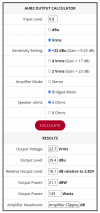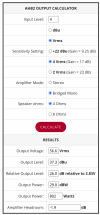It has nothing to do with that, the whole article is about the power dissipation in the output transistors versus that in the loudspeaker load. That values in the table you quoted is normalized to 1 watt.
Guide to Normalization Formula. Here we discuss how to calculate Normalization with examples, calculator and downloadable excel template.

www.educba.com
Regardless of the phase angle, if you apply say 2.83V to a loudspeaker at 1 kHz, and if the impedance at that frequency is 8 ohm, then current = 2.83/8 = 2.83/8 = 0.35375 A,
that is, whether the phase angle at that point is 0, 30, 45 or 60 degrees, the load current will still be 0.35735 A (assuming there are no other impedance in the circuit), but the power dissipation in the output devices will be higher at the larger phase angles. The math analysis involved are quite complicated, but it does appear to me the author knew what he's talking about so I trust those figures. At the same output voltage, large phase angles do not result in the amplifier having to supply higher current to the loudspeaker load, but it does mean the amplifier will be subject to more heat because as the load dissipate less power, the amplifier will have to dissipate more.
If you are keen on learning more on this, may as well read the following as well, I believe the author of the first article provided a link there (in the introduction) too:
Semiconductor Safe Operating Area. The influences and problems faced with high power amplifiers using bipolar junction transistors (BJT).

sound-au.com




